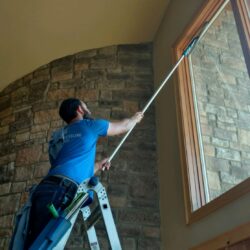When it comes to investing in off‑plan property in Dubai, many ask: “How much should I invest?” The answer isn’t a single figure—it depends on your goals, budget, timeline, risk appetite and location choice. What follows is a well‑researched, humanised guide that helps you think through the numbers, the strategy and the mindset you need before taking the plunge.
1. Understanding Your Entry Point
First, let’s talk numbers. What’s the typical minimum ticket for an off‑plan investment in Dubai, and what deeper costs should you factor in?
-
Entry levels for off‑plan apartments in Dubai in 2025 generally start from around AED 600,000 (approx USD 163,000) for studios/one‑beds in emerging areas.
-
On average, the price for off‑plan apartments stood at roughly AED 1,973,057 in early 2025.
-
Additional costs: When you buy off‑plan you must budget beyond just the advertised “price”. The local transfer/registration fee to the Dubai Land Department (DLD) is 4% of the purchase price. Also, there is the Oqood registration for off‑plan (typically AED 1,000‑5,000).
-
When you add all the upfront “hidden” or lesser‑highlighted costs, you’re looking at an extra ~6‑7% of the purchase price
What this tells you: If you are targeting a modest off‑plan home as an investment, you might realistically need an entry budget of around AED 700,000‑800,000 (including basic additional costs) in certain locations. If you’re going for a higher‑tier or prime area, the budget will escalate accordingly (e.g., AED 2 million+).
2. Matching Budget to Strategy & Timeline
What you should invest very much depends on what you intend to do with the property:
-
Short‑term flip / capital appreciation play: If you’re banking on price rises before or shortly after handover, you might choose a lower ticket (in a growth area) but you’ll need to pick timing, developer and location well. Off‑plan properties typically launch at 10‑30% below market ready‑property levels.
-
Long‑term hold for rental income + appreciation: Then you’d want a property with good rental demand, decent yields (6‑9% in some emerging areas) and a reasonable purchase budget to secure quality.
-
Lifestyle/investment hybrid for global mobility: If you’ll also use the property for personal stays (holiday home, family use) and want strong quality/brand/developer credentials, expect to budget significantly more—especially for premium areas.
Here’s a rule of thumb:
If your budget is below AED 1 million, you are likely looking at entry‑level off‑plan apartments in mid‑emerging communities.
If your budget is AED 1‑2 million, you open up to better locations or larger units (1‑2 bed) with stronger upside.
If your budget is AED 2 million+, you’re in a territory where premium branding, strong location or scale begin to matter—and you may qualify for residency/visa benefits. For instance, properties valued at AED 2 million can be eligible for the Dubai Golden Visa route.
3. Location, Developer & Payment Plan Matter
Investing the “right amount” isn’t just about budget—it’s about making sure that budget is well allocated.
-
Location: Price per square‑foot (psf) in off‑plan varies widely. For example, some areas like Palm Jumeirah might range AED 3,800‑6,000 psf, while more emerging zones may be AED 900‑1,300 psf.
-
Developer reputation: Buying off‑plan means you’re trusting the developer for build quality and timely delivery. A strong developer can justify a higher investment because risk is lower.
-
Payment plan / stage payments: One of the big attractions of off‑plan is flexibility—you might pay 10‑20% down, then periodic payments during construction, sometimes with post‑handover payment options. This means you might commit to a total amount much larger, but cash flow is smoothed.
-
Expected yield and appreciation: Emerging zones for off‑plan are showing rental yields around 6‑9% after handover in some cases. And early builders claim appreciation of 20‑40% from launch to handover in favourable projects.
So, if you invest say AED 1.5 million in a well‑chosen off‑plan unit, you should check that expected rental yield and expected appreciation justify the waiting period and risk.
4. Humanising the Decision: Your Investment, Your Lifestyle
Let’s step back from numbers for a moment: think about you. Why are you investing? What do you want from the property?
-
Maybe you’re an investor based in India (like yourself, Kajal) who wants a globally mobile asset: one you can rent, use partly, and feel confident about. Then you might lean toward a slightly higher budget to ensure location, quality and future resale value.
-
Maybe you’re comfortable waiting for 2‑4 years for handing‑over, and you’re willing to ride a cycle for appreciation—but you also want a property you’ll rent out afterward. Then you’d pick a budget where cash‑flow during construction is manageable.
-
Or maybe you’re cautious: you just want exposure to Dubai’s market but don’t want massive risk. Then you might opt for a smaller ticket, in a more emerging community, paying early and hoping for upside—but accepting slower rental yield or less prestige.
In all cases, the investment amount becomes personal: what you can afford, what you’re comfortable waiting for, and what benefit you value (capital growth vs rental vs lifestyle).
5. How Much Should You Invest? A Guideline
To translate all this into actionable guidance:
-
If you are entry‑level: aim for AED 600,000‑900,000 in off‑plan, in a good emerging location, with a good payment plan. Expect moderate yield and growth.
-
If you are middle bracket investor: aim for AED 1‑2 million. This gives you access to better locations (and hence stronger growth potential), and possibly yields of 6‑8% post‑handover.
-
If you are premium/lifestyle/investor combo: Budget AED 2 million+. You’ll be in stronger zones and can also take advantage of residency routes (Golden Visa eligibility starts at AED 2 million). But you must be comfortable with larger commitment, slower liquidity, higher expectations.
-
Always add +6‑7% of your budget to account for registration fees, service charges, and other costs.
-
Ensure your payment plan is comfortable—you don’t want your cash‑flow strangled waiting for handover.
6. Final Thoughts & cautions
Buying off‑plan is exciting—but it’s also about patience and discipline.
-
Be aware of risk: Project delays, developer issues, market supply‑demand shifts all affect outcomes.
-
Timing matters: Early‑stage launch prices give better margin—but they also carry more uncertainty.
-
Exit strategy: Know how easy it is to sell or rent in that location when handover arrives.
-
Align your budget with your goal: Don’t overstretch just because there’s a “great deal”. Property should fit into your broader investment/lifestyle plan.
-
Stay human: This property might serve you (or your family) as much as it serves returns. The amount you invest should reflect what you value—not just what the market hype says.




